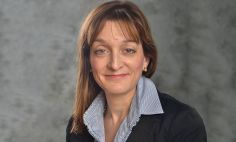Tiina K. Urv, Ph.D., leads the Rare Diseases Clinical Research Network, part of NIH’s Office of Rare Diseases Research. She discussed the network, which includes 22 groups across the country and conducts research on approximately 200 rare diseases, with NIH MedlinePlus magazine.
What makes a rare disease rare?
We define rare diseases as defined in law, through an amendment to the Orphan Drug Act of 1983. That is a condition that affects fewer than 200,000 Americans.
What is the biggest misconception about rare diseases?
The biggest misconception is that rare diseases are rare. There are over 7,000 rare diseases that impact the lives of over 30 million people.
If you look at it collectively, that's as many people in the U.S. who have diabetes, and as many as those with HIV, cancer, and Alzheimer's combined. Rare diseases are a huge public health problem and we need to start thinking about them as a group as opposed to one at a time.
Can you tell us about the Rare Diseases Clinical Research Network?
The network came about through legislation that passed in November of 2002, known as the Rare Diseases Act.
Since 2003, the network has funded 31 individual consortia (smaller research groups within the network), touched on over 238 disorders, and over 40,000 people have participated in one way or another in the network over time.
What areas of research are promising for rare diseases?
Everyone within the network is doing something a little different. For instance, gene editing is really exciting. We have a lot of hope with that.
How do you recruit people with rare diseases for clinical trials?
It is challenging. That's one of the things that the network works on. How to best go out and find patients. They work closely with the patient advocacy groups.
Each of the individual groups consists of a team that includes patients, advocacy groups, researchers, and clinicians. The individual groups each focus on at least three rare diseases. These consortia work very closely with NIH and its Rare Diseases Clinical Research Network.
How do you recommend patients or their loved ones with rare diseases get involved or join a study?
A really good resource we have at NIH is the Genetic and Rare Disease Information Center (GARD). It links you to so many wonderful resources. If you're looking for a family group, you can either email them or call them. We can help them find the care they need as best we can. If somebody's looking for a clinical trial, all clinical trials have to be registered at clinicaltrials.gov. And the Rare Diseases Clinical Research Network has a patient registry.
What message do you have for patients struggling with a rare disease?
You're not alone. There are people who care and there are people out there—researchers, clinicians, patient advocacy groups—who are really working hard to make a difference and find answers. It's a really amazing community.







